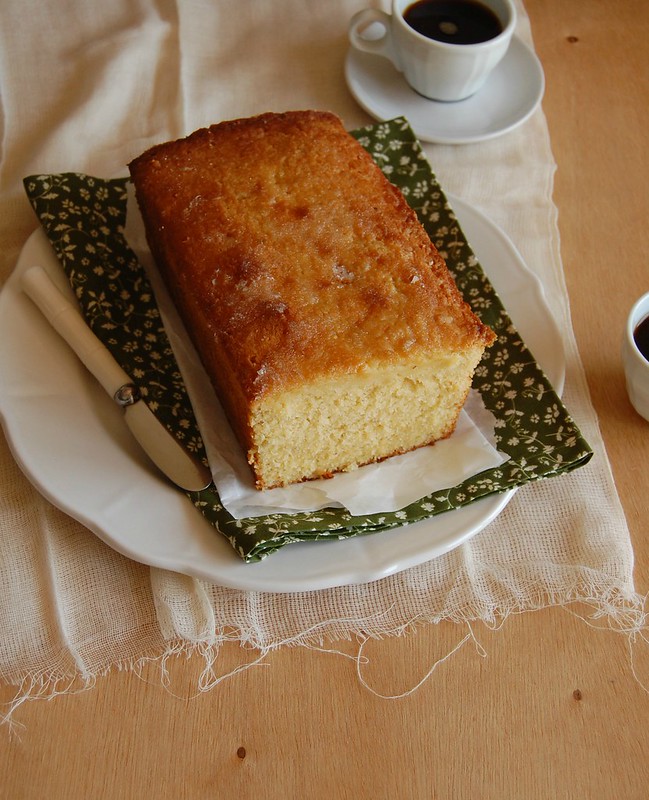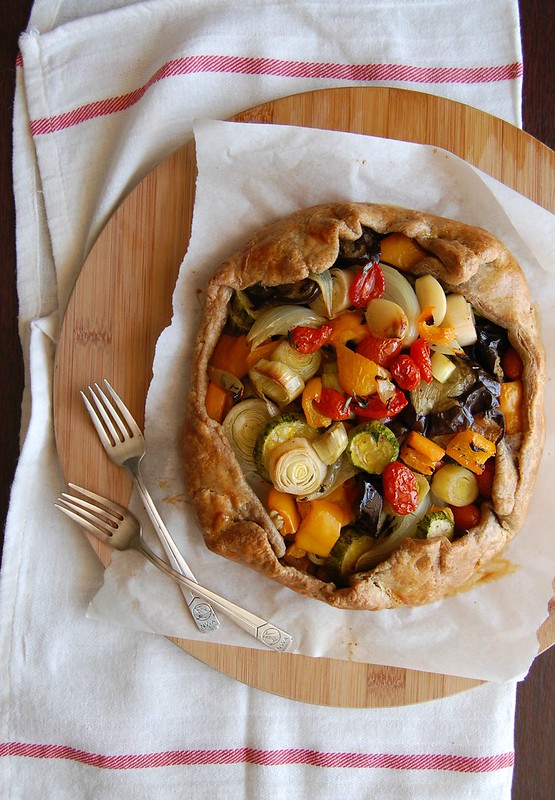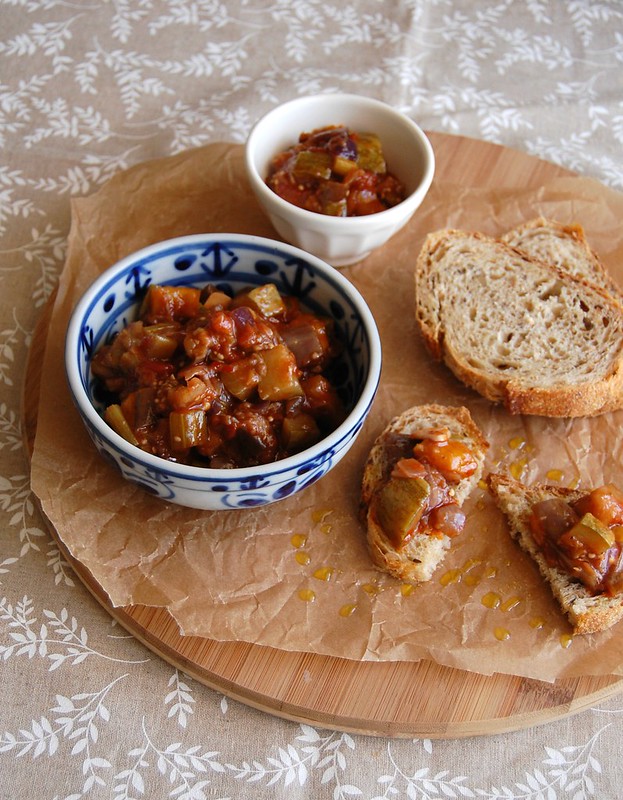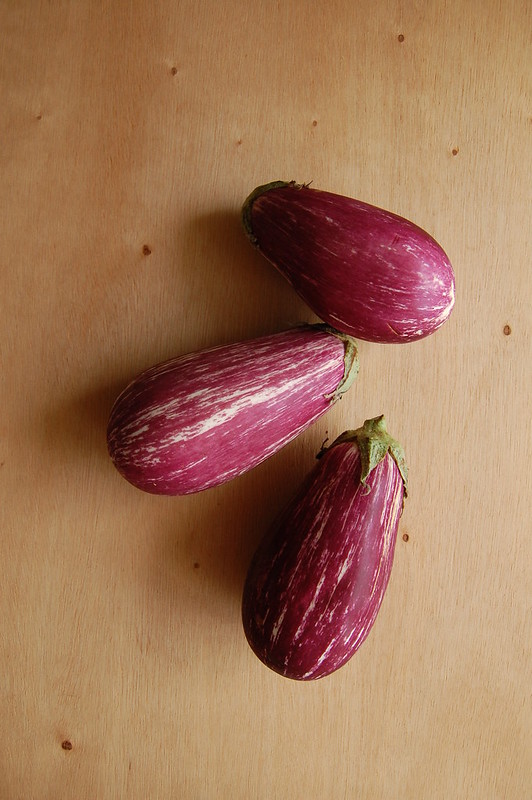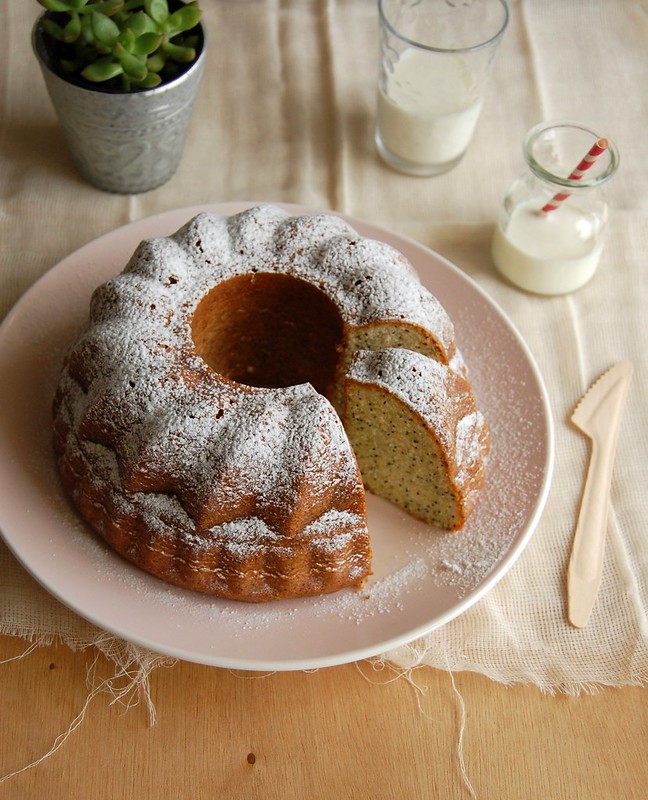I was up till 2 am this morning watching the Golden Globe Awards but it was worth it: some of my favorites won (The Affair, Ruth Wilson, Kevin Spacey), some of my favorites did not win (Steve Carell, Rosamund Pike), but overall I though the winners really deserved the awards (unlike previous years).
I did not understand, though, Fargo and Billy Bob taking the Globe home for I strongly believed that True Detective and Matthew were impossible to beat (I haven’t seen Fargo for I really don’t like the movie).
When it comes to award shows surprises can be a good thing, but when I’m in the kitchen I prefer to stick to what I trust – in this case, the Good Food magazine. Everything I’ve made from it turned out great, and this cake is no exception: the limes and the ginger add a refreshing touch to the good old lemon drizzle cake, and it turned out so tender it was hard to slice.
And to make things even better, there’s coconut in the batter as well – yum!
Lime, ginger and coconut drizzle cake
slightly adapted from Good Food magazine
Cake:
175g granulated sugar
finely grated zest of 3 limes
200g unsalted butter, softened
3 large eggs
200g all purpose flour
1 teaspoon baking powder
1 rounded teaspoon ground ginger
pinch of salt
50g desiccated coconut
2 tablespoons finely chopped crystallized ginger
2 tablespoons milk
juice of 1 ½ limes
Drizzle:
juice of 1 ½ limes
1 ½ tablespoons granulated sugar
Preheat oven to 180°C/350°F. Butter a 20x10cm (8x4in) loaf pan, line it with baking paper and butter the paper as well.
Place sugar and lime zest in the bowl of an electric mixer and rub them together with your fingertips until sugar is fragrant. Add butter and beat until light and fluffy. Gradually add the eggs, mixing well between each addition.
Sift together the flour, baking powder, ground ginger and salt in a medium bowl. Using a spatula, fold into the cake mixture with the coconut and chopped ginger. Add the milk and lime juice and mix until smooth. Spoon the mixture into the prepared pan and smooth the surface.
Bake for 60-70 minutes or until risen and golden brown – a skewer inserted into the middle of the cake should come out clean. Cool the cake in the pan for 10 minutes.
Use a wooden skewer to make holes all over the cake. Mix the drizzle ingredients and slowly spoon the sugary mixture over the top of the warm cake and leave in the pan until completely cold.
Serves 8
Monday, January 12, 2015
Lime, ginger and coconut drizzle cake + the Golden Globes
Friday, January 9, 2015
Rye ratatouille tart
My craving for vegetables is still full on and I’m always looking for interesting ways of cooking them, especially because my husband has become a veggie convert – I love it that he’s realized that he doesn’t need all the meat he though he needed and that eating more vegetables is good for him (let’s forget that it took him forty-six years to finally get to that conclusion – better late than never, right?) ;)
I love tarts, both sweet and savory, so when I saw this ratatouille tart on a Brazilian TV show I fell in love with it: so colorful, so beautiful! I decided to make it but switched the pastry (pâte brisée) for the wonderful rye pastry I love so much – it worked like a charm! The flavorsome pastry paired beautifully with the roasted vegetables.
This tart is delicious and looks really beautiful – I’m all for food that tastes and looks good.
Rye ratatouille tart
adapted from this lovely book and from Rita Lobo
Pastry:
½ recipe rye pastry
Filling:
1 small eggplant
1 small zucchini
¾ cup cherry tomatoes
1 leek, white part only
1 small yellow pepper
1 onion
4 garlic cloves
salt and freshly ground black pepper
3 tablespoons extra-virgin olive oil
2 sprigs rosemary
4 sprigs fresh thyme
Slice the eggplant in 1cm slices (if too wide, cut the slices in half). Transfer to a bowl of lightly salted water. Set aside for 30 minutes.
Preheat the oven to 200°C/400°F.
Slice the zucchini in 1cm slices (if too wide, cut the sliced in half), cut the cherry tomatoes in half lengthwise, slice the leek in 1cm slices as well and cut the bell pepper in squares. Peel the onion and cut into eights, then slice the garlic cloves in half lengthwise.
Drain the eggplant, pat dry with paper towels and place the pieces on a baking sheet. Drizzle with 2 tablespoons olive oil and roast for 15 minutes. Place the other vegetables on the baking sheet with the eggplant, drizzle with 1 tablespoon olive oil and season with salt and pepper. Toss to coat, then roast for 30 minutes. Remove from the oven. Lower the oven temperature to 180°C/350°F.
Place the dough onto large piece of baking paper and roll into a rough 25cm (10in) circle. Transfer to a cool baking sheet. Arrange the roasted vegetables on the center of the pastry and top with the fresh herbs. Fold one edge in towards the center of the filling and continue folding all the way round, bringing the edge of the pastry towards and over the filling.
Brush the tart with the egg wash (only the pastry). Bake for about 30 minutes or until golden brown. The tart is delicious both warm and at room temperature.
Serves 4
Wednesday, January 7, 2015
Golden raisin cookies
One very common dish during the holiday season here is rice with raisins – it is served with the usual meat dishes for Christmas and New Year’s Eve dinners. I know people who love raisins in their rice, but most people I know hate it, including my husband and my sister – they’re 46 and 21, respectively, so you can imagine that the hate for rice with raisins is spread throughout different generations. :D
Growing up I was never a fan, either, for I did not understand why people would put something sweet in a savory dish – I thought it was such a waste of something as delicious as rice. :)
I grew up and learned that sweet and savory together in food is actually a good thing, but to be honest I’m still not a fan of rice with raisins: there are millions of other wonderful things to be cooked with rice and I prefer my raisins elsewhere, like in cookies – I used the golden raisins called for in the original recipe, but I am sure that they would be equally great with dark raisins, too.
I found that giving the dough a couple of hours in the freezer instead of the refrigerator is key here because the frozen raisins are much easier to slice.
Golden raisin cookies
from one of my favorite cookbooks
1 cup golden raisins
¼ cup (60ml) dark rum
½ cup (113g/1 stick) unsalted butter, softened
½ cup (70g) confectioner's sugar
1 large egg
pinch of salt
1 teaspoon vanilla extract
1 2/3 cups (235g) all-purpose flour
granulated sugar, for sprinkling
In a small bowl, combine the raisins and rum. Set aside to soak for at least 1 hour.
In the bowl of an electric mixer, using the paddle attachment, beat the butter and confectioners' sugar at medium-high speed until well blended and light, about 1 minute. Add the egg, salt and vanilla and beat until blended but not smooth (dough will look curdled at this point). Scrape down the sides of the bowl. At low speed, add the flour, mixing until just blended. Drain the raisins, discarding the rum, add them to the dough and mix until combined.
Divide the dough into two equal parts. Place each on a piece of parchment paper; shape dough into logs. Fold parchment over dough; using a ruler, roll and press into a 3.5 cm (1.4in) log – like Martha does here. Wrap in parchment. Chill in the freezer until very firm, 2-3 hours.
Preheat oven to 180°C/350°F; line two large baking sheets with baking paper.
Unwrap one log at a time (keep the other in the freezer). Roll dough logs in the extra sugar, coating them evenly, then cut into 6mm (¼in) thick rounds; space 2.5cm (1in) apart onto prepared sheets. Bake, rotating sheets halfway through, until golden brown around the edges, 15-20 minutes. Cool on the sheets for 5 minutes, then slide the paper with the cookies to a wire rack to cool completely.
Makes about 45 cookies
Sunday, January 4, 2015
Caponata - easy and delicious
Caponata is something I ate a lot growing up, but never knew the real name – my grandmother used to make it all the time, especially when there were a lot of people to feed, and she served it with bread or on small toasts, canapé style. I loved it and would ask her to make it again and again – I used to call it “my grandma’s eggplant dish”, having no idea it was such a staple of Italian cuisine.
It took me forever to make caponata myself, maybe because it has always been something so attached to my grandma’s cooking, but my husband asked me to make it and I decided to give it a go, especially after going through some of my books and finding a recipe by Andrew Carmellini on one of my favorite cookbooks – it is his the most delicious gnocchi I’ve ever made, and I ate at both Lafayette and Locanda Verde when I was in NYC, so I trust the guy. ;)
Andrew’s caponata is very easy to put together and it tastes great, not to mention it benefits from a day of two in the fridge – I’m all for making things in advance, so this recipe has become part of my repertoire and I hope it becomes part of yours, too.
Caponata
slightly adapted from the delicious Urban Italian: Simple Recipes and True Stories from a Life in Food
1/3 cup (80ml) extra-virgin olive oil
1 red onion, diced large
1 yellow pepper, diced large
1 Italian eggplant, diced large
3 stalks of celery, diced large
1 zucchini, diced large
½ teaspoon table salt
¼ teaspoon freshly ground black pepper
½ teaspoon red pepper flakes
2 cloves of garlic, sliced thin
1 400g (14oz) can chopped peeled tomatoes
1 tablespoon balsamic vinegar
2 tablespoons thyme leaves
3 tablespoons red wine vinegar – I used sherry vinegar
Heat olive oil in a large saucepot over high heat. Add the onion, pepper and eggplant. When the vegetables have softened a bit (about 5 minutes), add the celery and zucchini. Season with half the salt and black pepper. Mix the ingredients together and continue to cook.
After ten 10 minutes, add the red pepper flakes and garlic. Cover and reduce the heat to medium, and let the steam roast the vegetables for 5 minutes. Add the tomatoes, reduce the heat to low and simmer for 10 minutes, until vegetables are soft but not falling apart and the tomatoes are well incorporated. Mix in the balsamic vinegar and cook for 2 minutes.
Remove the saucepot from the heat, add the thyme and season with remaining salt and pepper (add more salt to taste if necessary). Mix in vinegar.
The caponata can be kept in an airtight container in the fridge for 4-5 days (I thought it tasted better the day after it was made).
Serves 8-10
Friday, January 2, 2015
Lemon poppy seed whipped cream cake, or how to use up heavy cream in a fantastic way
Here where I live one thing happens time and time again during the holidays: heavy cream disappears from the grocery stores. Because there were years I needed heavy cream for a number of recipes and couldn’t find any, now I usually stash two bottles of the ingredient before all the craze begins, and that way I can make desserts and ice cream (it is summer here after all).
I was too greedy last time, and ended up with a lot of heavy cream to be used – really, a lot. Shame on me. I made popsicles, a tart, and also a posset, but every time I opened the fridge I had the feeling that the cream was taking over the whole thing.
Pressed for time – heavy cream doesn’t last long, unfortunately – I came up with a wonderful solution: Rose Levy’s whipped cream cake, which I’d baked before and it was delicious, but this time I added lemon zest, limoncello and poppy seeds to make it even more interesting.
Lemon poppy seed whipped cream cake
slightly adapted from the wonderful Rose's Heavenly Cakes
225g cake flour (or 200g all purpose flour + 25g corn starch)
2 teaspoons baking powder
¼ teaspoon table salt
3 tablespoons poppy seeds
1 cup + 2 tablespoons (225g) granulated sugar
finely grated zest of 2 lemons
1 ½ cups heavy cream, chilled
3 large eggs, room temperature
½ teaspoon pure vanilla extract
2 teaspoons limoncello (optional) – I used homemade
icing sugar, for dusting
Preheat oven to 190°C/375°F (180°C/350°F if using a dark pan). Butter and flour a 10-cup fluted metal tube or Bundt pan.
In a medium bowl, whisk together flour, baking powder, salt and poppy seeds. In another bowl, rub sugar and lemon zest together with your fingertips until sugar is fragrant.
In the bowl of an electric mixer fitted with the whisk attachment, whip cream on low, gradually increasing speed to medium-high as cream thickens, until stiff peaks form.
In a medium bowl, whisk together eggs, vanilla and limoncello. With the mixer on medium-high, gradually add egg mixture; beat until thickened (like mayonnaise) and well combined. Gradually add sugar, about 30 seconds.
On low speed, beat in the flour mixture until flour is dissolved and well combined. Transfer batter to prepared cake pan and smooth surface.
Bake until a cake tester inserted into cake comes out clean and springs back when lightly pressed with your finger, 25-35 minutes. Transfer cake pan to a wire rack and let cool 20 minutes; cake will begin to shrink from sides of pan.
Carefully unmold cake onto the rack and cool completely. Dust with icing sugar before serving.
Serves 8-10
